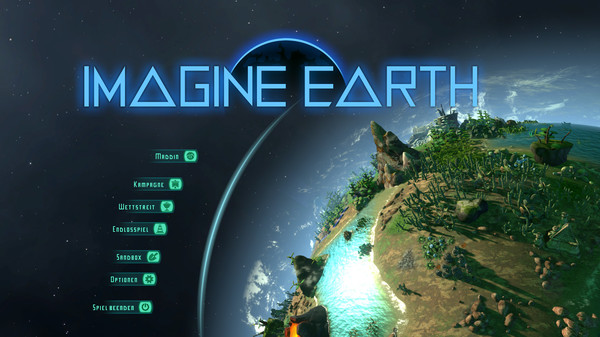
In my steam research, I saw over and over how important an interesting capsule image was. A good one was a mouse magnet. The participants I observed couldn’t help but hover over some capsules so that the tooltip appeared with the screenshots and tags. This was the first step in getting people to open your store page. Here is a clip of someone hovering over interesting capsule art:

If the capsule isn’t attractive, the participants didn’t hover. I always theorized that a bad or unprofessional looking capsule image hurt sales but couldn’t prove it.
But then I found an example last week in the form of the game Imagine Earth. According to the devs, improving their capsule art improved daily sales 20-fold.
So I reached out to the developers of Serious Bros to get the full story. I talked to Jens (one half of the team) who is in charge of game art, UI, 3D & level design and wrote the game’s story. Martin, the other half of the studio (and not his actual brother), works on the game’s code. Jens was kind enough to share their art changes and corresponding sales history.
Imagine Earth entered Early Access on April 2014 with the following capsule art. At the time it was selling 0-3 copies a day.

Then, in June 2015 (a year after going live) they swapped out the capsule art to this:

Sales immediately notched up to 40-60 copies a day and stayed at that level. Look at this graph and you can pick out exactly when they changed the capsule art. Jens says they didn’t change anything else other than that capsule that could have notched up the sales.

Just looking at the two capsules, the later design really gives the feel of a much richer game. The earlier capsule feels like a hobby project. It is the combination of the more sophisticated text treatment and the dynamics of the space ships.
Your mileage will vary. Imagine Earth is a quality game that is the type of game Steam players like. I think changing the capsule image threw open the gates so that players could see how great a game it is. The original capsule was holding it back. But if your game does not match the desires of the Steam audience or is of poor quality, don’t expect to magically get the same results by changing your capsule.
My recommendations based on this:
- Hire a professional artist! Art is so critical to the success of your game. Shoppers look at screenshots and trailers, but before they even see those, they have to like your capsule first enough to click onto your page.
- People can just smell programmer art. You cannot sneak by it.
- If you can’t afford an artist to do your whole game, at least hire an artist to do your capsule art. I think you can skate by with a mediocre trailer that is just a montage of gameplay clips but you can’t fake a professional capsule.
- A good quality capsule will cost you about $500-1000 USD.
- To find artists look at the capsules of top independent games for your game’s genre and contact the dev team to see if they would be willing to share their artist with you.
- Don’t just hire people who are good at art. Specifically look for people who make successful capsules. It is a very unique skill because they must capture the spirit of the game yet still provide something “hooky” about it. Not all artists are good at making capsule art.
- Look at the capsules of other games in your genre and lean into the tropes so that people can quickly identify it. One of the things that the later of two capsules is that they look like strategy games. The first one is ambiguous. For instance I think Imagine Earth is successful because it has a planet, glow-y text, and a space faring vehicle.
Jens at Serious Bros provided their own set of tips:
- Nowadays we’re updating the capsule with a banner for every big update that we deliver every 1-2 months. Basically to show that something is happening
- After 1-2 years people started complaining massively that Imagine Earth isn’t getting done. 3-4 years later the recognition turned into respect that we are still doing it.
- Marketing wise we learned that we could try many things from the best practice book for indies and try other platforms as well but it seems as the only thing that continuously mattered was being on Steam with an intriguing project.
- By now almost 37.000 players sustained our development with their support and gave us the necessary time to learn and improve Imagine Earth into a unique game experience.
Jen’s art also continues to evolve. Look at this stunning progression.

Check out Imagine Earth on Steam. They continue to post updates and this is a great project to watch.